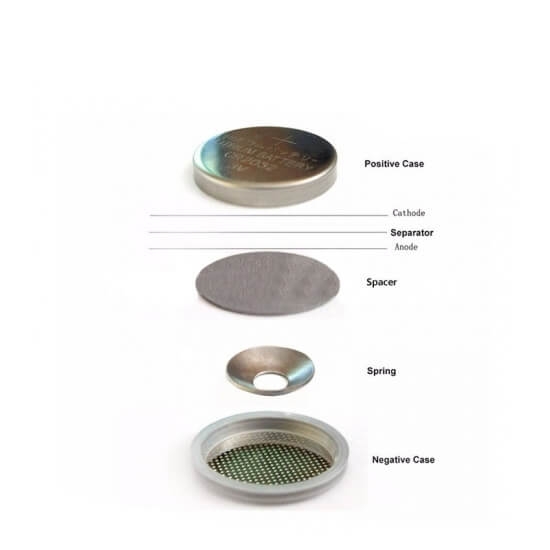Button Cell Research: Enhancing Performance and Safety
Button cells, also referred to as coin cells, are small, disc-shaped batteries commonly used in devices such as watches, hearing aids, calculators, and remote controls. As the demand for portable and efficient energy storage grows, Battery Coin Cell Case has become pivotal in improving energy density, safety, sustainability, and overall performance.
---
● Key Areas of Research
1. Battery Chemistry Advancements
- Material Innovation: Researchers are exploring advanced materials like lithium manganese dioxide (LiMnO2) and silver oxide (Ag2O) to improve energy density and voltage stability.
- Solid-State Electrolytes: The transition to solid-state electrolytes aims to enhance safety by reducing the risk of leakage and thermal runaway.
- Rechargeable Button Cells: The development of rechargeable lithium-ion button cells offers a sustainable alternative to disposable variants, minimizing environmental impact.
2. Safety Enhancements
- Child-Safe Designs: With ingestion being a significant concern, child-safe button cells are now being developed with:
- Bitter Coatings: Added to deter ingestion.
- Color Alerts: Easily visible designs to identify swallowed batteries for medical emergencies.
- Encapsulation Improvements: Enhanced sealing technologies are reducing the risk of electrolyte leakage.
3. Environmental Sustainability
- Recyclable Materials: Researchers are focusing on creating button cells from materials that are easier to recycle.
- Toxicity Reduction: Efforts are underway to replace hazardous materials like mercury and cadmium with safer alternatives.
---
● Applications of Button Cell Research
Consumer Electronics
Improved energy density allows button cells to power devices with greater longevity, such as wearable fitness trackers, medical devices, and IoT sensors.
Medical Devices
Compact, reliable, and long-lasting button cells are integral to hearing aids and implantable medical devices, where safety and consistent performance are critical.
Automotive and Industrial
In applications like key fobs and sensors, button cell research contributes to better reliability in extreme conditions.
---
● Emerging Technologies in Button Cell Manufacturing
1. Advanced Coating Techniques
- Thin-Film Deposition: Enables uniform application of active materials, improving capacity and lifecycle.
- Nanostructured Materials: Enhances surface area for greater energy storage.
2. Automated Production Lines
Modern manufacturing lines integrate precision robotics and quality control to ensure consistent production of high-performance cells.
3. Testing and Analysis
- Accelerated Aging Tests: Simulate long-term use to predict battery lifespan.
- Thermal Testing: Assesses stability under varying temperature conditions.
---
● Challenges in Button Cell Research
1. Miniaturization vs. Capacity: Balancing size reduction with sufficient energy storage remains a challenge.
2. Safety Concerns: Despite advancements, ingestion risks and thermal stability require ongoing attention.
3. Environmental Impact: Scaling up eco-friendly materials while maintaining cost-effectiveness.
---
● Future Directions
Button cell research is advancing rapidly, with focus areas including:
- Developing solid-state button cells for safer and more efficient energy storage.
- Introducing biodegradable components to reduce environmental harm.
- Enhancing rechargeability and energy density to support modern applications.
---
Conclusion
Button cell research is at the forefront of innovation in compact energy storage solutions. By addressing safety, performance, and environmental concerns, researchers are paving the way for smarter and more sustainable battery technologies. As these advancements take shape, button cells will continue to power a diverse array of devices, from everyday gadgets to life-saving medical equipment.


 +86 13174506016
+86 13174506016 Louis@lithmachine.com
Louis@lithmachine.com +86 18559646958
+86 18559646958
 18659217588
18659217588